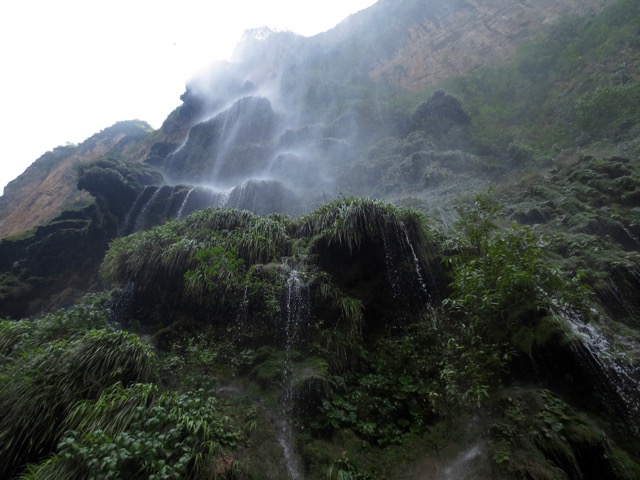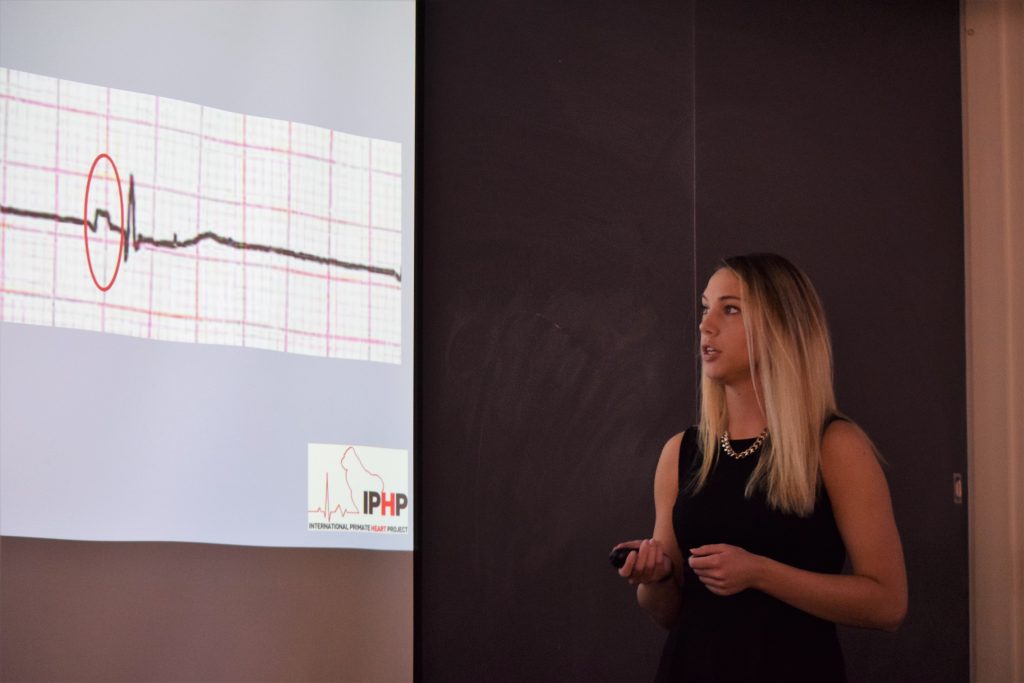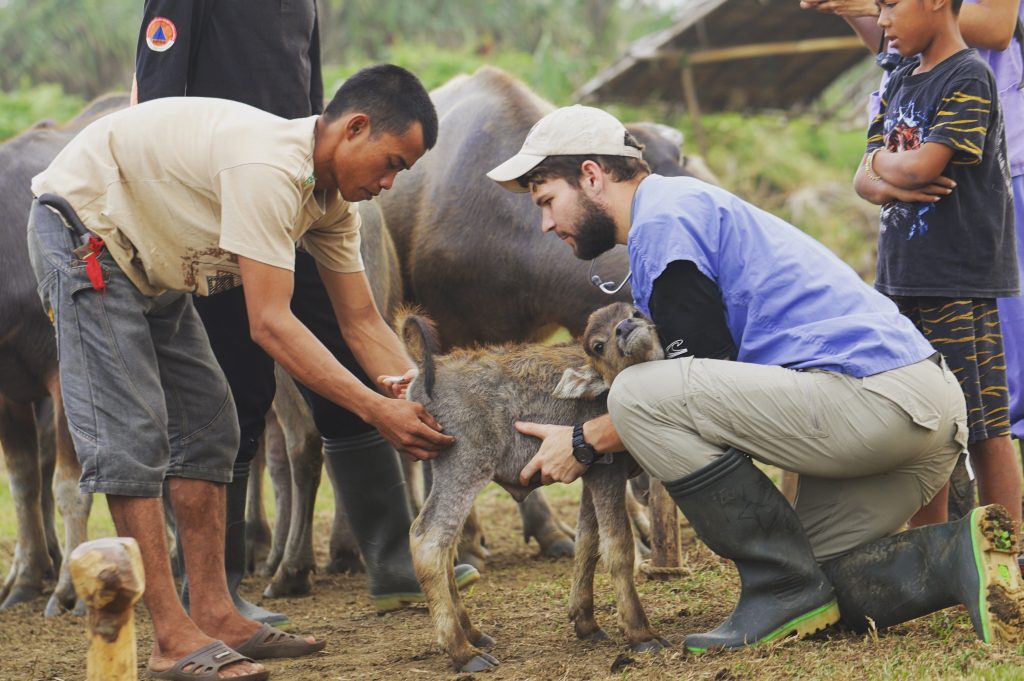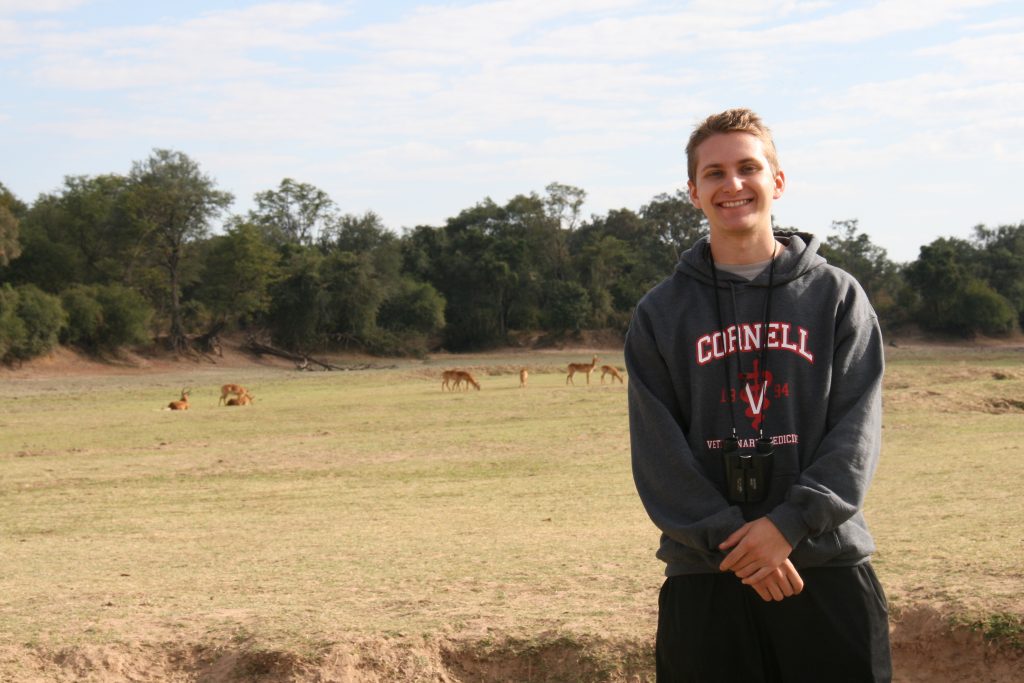This past summer, I received a grant from Cornell’s Student Chapter of the Wildlife Disease Association (WDA) to travel to the WDA 66th Annual International Conference in San Cristóbal de las Casas, in Chiapas, Mexico. The Wildlife Disease Association was founded in 1951 by a group of scientists from US and Canada with the mission of acquiring, disseminating, and applying knowledge of the health and diseases of wild animals with respect to their biology, conservation, and interaction with humans and domestic animals. Although the United States contributes about half of its membership, the remaining members hail from all around the world, and the annual conference provides a venue for them to meet, exchange ideas, and present updates on their latest research. For me, it was an incredible opportunity to both learn about, and meet experts in, the field I hope to enter.
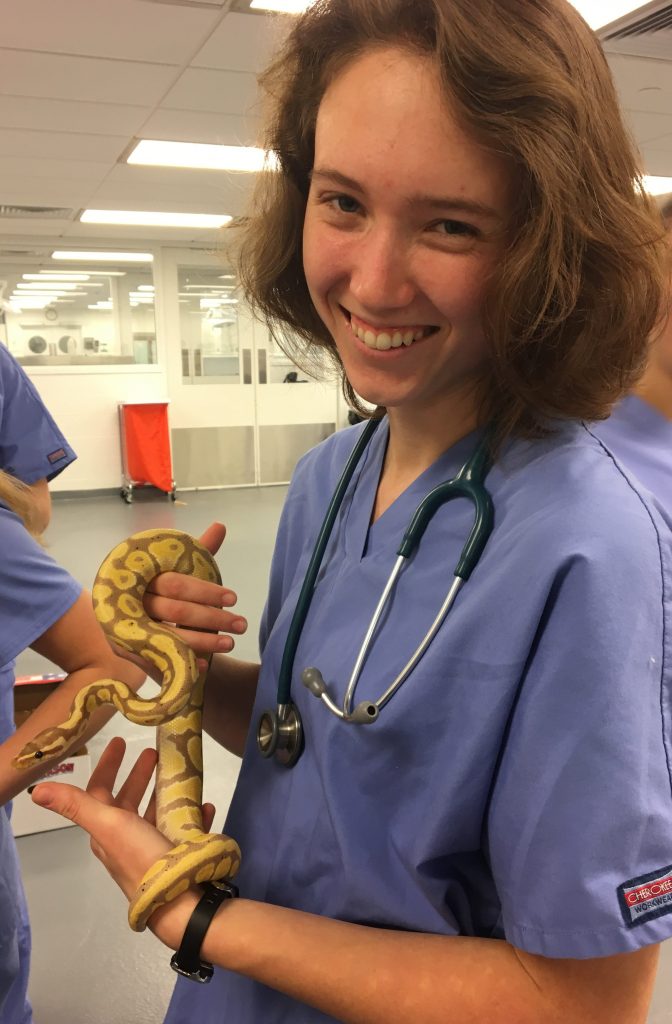
Second year vet student Kristie Schott class of 2020) holds a ball python during a Zoo and Wildlife Society (ZAWS) wet lab at Cornell.
Aside from a few keynote speakers, the conference mostly consists of short thematically grouped 18-minute presentations interspersed with coffee and snack breaks, during which time attendees have the opportunity to view the posters, which change daily. The volume of information was staggering – over the course of the conference, there were nearly 100 talks given and an equal number of posters presented. Since the WDA is not strictly a veterinary organization, but rather highly interdisciplinary, their meetings bring together veterinarians, wildlife management agencies, and researchers specializing in a wide range of topics pertinent to wildlife health. This fact was clearly reflected in the sheer breadth of topics covered in the talks and poster presentations, which ranged from pathology to evolutionary genomics, and from disease ecology modeling to reports on disease outbreaks and their implications for management and conservation. Speaking as someone interested in clinical zoo medicine, wildlife medicine, and wildlife disease research but unsure what form a career combining those focuses might take, this helped expand my awareness of the many approaches to studying and safeguarding wildlife health.
Another notable feature of the WDA is that it is remarkably student-friendly. A full day of the proceedings at each conference is dedicated to student talks and posters, and the WDA offers several student prizes and travel grants to recognize students’ achievements and support their participation in the conference. They also held a student-mentor mixer after dinner at the end of the first day, although without a clear way to tell who was a student and who was a mentor, I’m not sure if it was ultimately any more helpful than all the other less formally organized opportunities to mingle. Then again, as a fairly reserved and introverted person, I tend to struggle to take full advantage of those kinds of networking opportunities – what if I introduce myself and then can’t think of anything to say? How awkward that would be! Thankfully, the senior WDA members were generally quite friendly and eager to meet fresh faces.

Built in the 16th century, la Catedral de San Cristóbal overlooks the city’s main square, known as the Zócalo, as well as the Plaza de Paz.
Given its location, the conference also offered an opportunity to visit a beautiful place and catch a glimpse of its vibrant culture. This didn’t come without a price – I had to take three flights, sprint through the Mexico City airport at 7am to make a connection, and catch a bus from Tuxtla Gutierrez up into the mountains before finally setting foot on the cobbled streets of San Cristóbal – but it was well worth the journey. Located high in the mountains of the state of Chiapas, San Cris, as the locals call it, is considered the cultural capital of the region and features a large artisans’ market showcasing the richly colored textiles the area is known for as well as multiple museums dedicated to textiles and traditional local dress, chocolate, Mayan medicine, amber, and jade. Politically speaking, the city’s culture has also been influenced by the ideology of the Zapatista uprising and the movement’s charismatic spokesperson, Subcomandante Marcos. On New Year’s Day in 1994 – the day NAFTA went into effect – the city, along with several nearby municipalities, was seized by the Zapatista Army of National Liberation, and although the Mexican army quickly regained control of the region, the Zapatistas used the uprising as a platform to raise global awareness of their agenda, which called for increased democratization of the Mexican government and indigenous control of local resources, particularly land. The group’s focus has since shifted from military action to civil resistance and politics, and local attitudes seem to remain sympathetic to the movement with a strong ethic of respect for indigenous rights clearly demonstrated in the numerous politically-minded cafes with posters of Zapatista quotes on their walls and shops sporting sign reading, “We respect indigenous rights – do you?”
Aside from its indigenous cultures, Chiapas is known for its natural beauty and biodiversity. The state boasts over 11,000 species, including 140 fish, 109 amphibians, 227 reptiles, 694 birds, 206 mammals, and 6.5% of the world’s butterfly species. The landscape, for its part, is speckled with beautiful mountain vistas, rivers, lakes, and waterfalls. Sadly, I didn’t have enough time San Cris to experience much of this bounty, but thanks to the WDA’s tradition of inserting a field trip day into the middle of the conference, I did get to visit the spectacular Cañón del Sumidero. Carved out by the Grijalva River, which travels 8 miles through the canyon’s vertical walls, Cañón del Sumidero is 1000 meters deep at the walls’ highest points, features several unique waterfalls, and is home to 4 protected species of fish, 12 protected reptiles, 195 species of birds, and 53 species of mammals. Depicted on the state’s coat of arms, the canyon is also a significant location in the culture and history of the region. The local Chiapanecas people resisted Spanish conquest for many years, and legend has it that when their last mountain stronghold had fallen, the remaining survivors retreated to the canyon and jumped from its highest point rather than risk being captured and enslaved. However, in spite of its ecological and cultural significance and its protected status as a National Park, the canyon is plagued by pollution with agricultural waste, sewage, and trash, particularly in the rainy season when runoff from heavy rains sweeps garbage from the streets of nearby cities into the river. On our way back through the canyon, we stopped at a bend in the river where the currents caused much of the trash to accumulate, choking the river in a massive tangle of plastics and driftwood. While our guides used this as a teachable moment to emphasize the importance of curbing pollution to protect natural places like the canyon, their lesson stopped at “be sure to dispose of your waste in the proper receptacle” with no mention of ways to reduce waste generation in the first place. Many people rely on disposable plastic water bottles when travelling, but there are ways to use reusable bottles while still ensuring that the water is safe – boiling water, for one, or using water treatment drops, as I did. While such alternatives may not be accessible to everyone, I think raising awareness of their existence is still an important component of conservation programming.
I highly recommend attending the WDA Annual International Conference to anyone who has the opportunity to do so. And while it’s definitely worthwhile to attend as a student even if you don’t have any research to present, I would also encourage anyone on the fence about submitting an abstract to go for it! Although our student WDA chapter offered a total of 4 grants to attend the conference, only 3 people applied, and, of those 3, I was ultimately the only one to attend the conference, which I think serves as a reminder that sometimes – maybe not often in this field, but sometimes – our biggest obstacle to taking advantage of an opportunity is submitting the application. I know I sometimes shut myself out of opportunities by telling myself that I’m unqualified or not ready and never applying, and maybe some of those times I’m right. But then again, maybe I’m not, and I’ll never find out if I don’t step out of my comfort zone and give myself a chance. The next conference will be August 5-10, 2018 in St. Augustine, Florida, and abstracts are due by March 1st. I hope to see some of you there!
ABOUT THE AUTHOR:
A member of the class of 2020 at Cornell University College of Veterinary Medicine, Kristie grew up outside of Boston, MA and received her Bachelor of Arts degree in 2014 from Princeton University, where she concentrated in Ecology and Evolutionary Biology and was first exposed to the field of wildlife disease research. She aspires to pursue a career combining clinical zoo and wildlife medicine with research on the ecology and epidemiology of diseases affecting her patients’ free-ranging populations.

